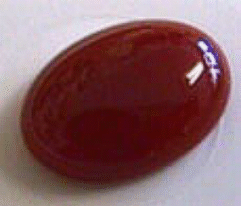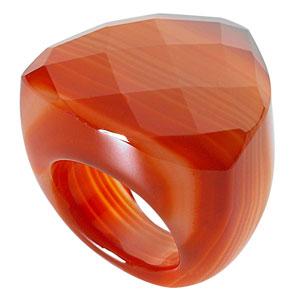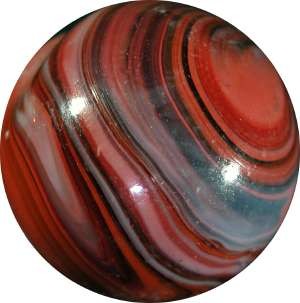


Carnelian is a form of Quartz, the most common form of rock in the Earth's crust. Specifically, geologists classify Carnelian as a Chalcedony; a member of the cryptycrystalline or microcrystalline group within the Quartz family. Cryptocrystalline crystals are too small to be seen, even with a microscope.
Having the same chemical make up as Agate, when Carnelian grades into brown it is known as Sard. When it contains bands of white, it is known as Sardonyx. In addition, some very dark brown Carnelian can be classified as Jasper. The distinction between these is very fine and relies more on visual appearance than scientific analysis. As a result, it is very possible that one man's Carnelian may be another man's Sard, Agate or Jasper. Chemically, Carnelian is composed of Silicon Dioxide, SiO2, and gets its red color from Hematite (Iron-Oxide, FeO2) impurities. Many Carnelians offered today are Agates which are dyed and then heat treated. Natural Carnelian will usually exhibit a cloudy distribution of color.
The name Carnelian heralds from the Latin word "carnis" and translates to "flesh," probably noted as one of the many shades of the stone. Another name for Carnelian was Cornelian, most likely derived from the Latin word "cornum" meaning "cherry". Carnelian's translucent color ranges from yellow-orange to reddish-brown to a deep red, and is enhanced by exposure to the sun.


